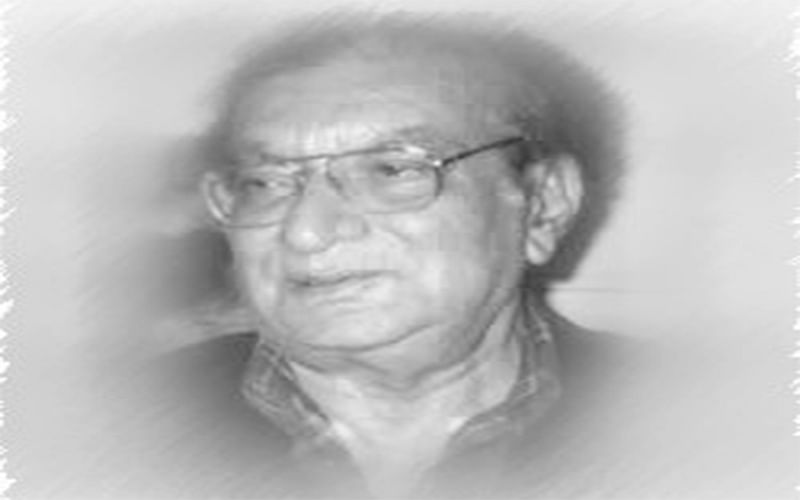Syed Ahmad Shah (1931-2008) popularly known as Ahmad Faraz was an iconic Urdu poet. Born in Kohat Khyber Pakhtunkhwa province, he did his schooling from his hometown and after went to Edward College Peshawar, where he did his Higher studies. Faraz had a dual Masters, in Urdu and Persian. During his college days he began his poetry career as a scriptwriter in Radio Pakistan and later he was appointed as lecturer Urdu at Islamia College, Peshawar. And subsequently he become a prolific poet with several anthologies to his credit.
Faraz’s poetry was full of fragrance. The other prominent aspect of his poetry was protest and resentment. His loved ones are say that Faraz was very outspoken and always spoke out against injustice.
“Mera Qalam tu Amaanat hai merye logu ki, Mera Qalam tu ‘Adalat’ hai mere zameer ki”
“Mei kat ghiru, ya salamat rahu yaqeen hai mujye, Ki ye hisaar-e-sitam koi tu girayee ga”
Faraz was a versatile personality and a distinguished writer. He became widely popular sometimes for his romantic ideas and sometimes for hailing revolution. His frank and fearless expression was empathetic, clean hearted, truthful and intellectual, as he was communicating with his poetic art. He was deeply inspired by Mirza Ghalib and Faiz. Faraz has a great contribution towards Ghazal, hitherto most significant in Asian sub-continent and he is regarded as an iconic figure in Urdu language and literature. Besides his literary output, Faraz represents multicultural or pluralistic identity, as he was in the league of his own, and even praised his enemies in a finest way.
“Umer bhar kon nibata hai taluq itna”
“Ayee meri jaan kay dushman tujhye Allah rakhye”.
Faraz turned his poetry into the fragrance of flowers by his unweaving expression and refreshing simplicity. Some called his couplets as a muse, some call it romance, however some make him responsible for falling in love with Urdu literature. By this inspiration of his iconic and deep couplets, forced non Urdu speakers to fall under its spell. His classical work, Ranjish hi sahi dil hi dukhane ke liye aa (If you’re still angry, then, come even if it is to hurt my heart) became most popular and rocked with the echo of his words. He later received iconic status, with the below mentioned couplets.
“Sunna hai loog usai ankh bar kay daikhtye hain”
“Soo us kay shahr mai kuch din tahar kai daikhtye hai”.
Faraz is undoubtedly one of the most passionate modern Urdu poet of last century, who never compromised with his couplets, which always remained simple and fine. He is admired across the Asian sub-continent as well abroad, as his work has been translated in different languages. Faraz grew up as a poet, broadcaster as well as academician. He was facilitated with couple of prizes like Adam ji Award, Abseen Award, and Hilal-e-imtiyaz.
Faraz has his own signature and style. He produced some finest specimens of revolutionary poetry. It would not be wrong to say that Faraz got a place which only a few other poets have achieved, as he received accolades from across the globe for his passion of poetry. It was the sign of popularity that his father, who always called him Ahmad also adopted to call him Faraz towards the end of life.
Faraz is placed at a prominent place in the history of poetry. His real name was Syed Ahmad Shah, however when he stepped into the world of poetry, it is being said that it was Faiz Ahmed Faiz who gave this name – Faraz – to Syed Ahmad Shah. Faraz was himself inspired by Mirza Ghalib Faiz, and Sardar Jafri for their progressive sentiments and traits. Faraz beautifully blended grief of love with sorrows of life through his poetry which struck a chord with youth. Faraz began his poetry with Ghazal, and subsequently shifted his attention towards Nazim and Na’at.
“Mere Rasool (saw) ki nisbat tujhe ujaloo sai”
“Main tera zikir karon subho Ke hawaalon sai”
After his political disappointments, he lived in a self-imposed exile in Europe and after his return to his homeland, he took some positions of administrative nature and was deputed as Resident Director of National Center and Director Academy Adbiyat. Faraz has compiled different anthologies like “Tanha Tanha”, Dard-e-Ashoob”, Khawish-e-kulyaat. His kulyaat opened with an Shahry-e- sukhan Arista hai. Ahmad Faraz became second poet after Faiz Ahmad Faiz who rose to iconic stature powered by his attractive and anti-establishment poetry. Which is still remembered by all sections of society. Let me end the piece with some of his couplets,
“Who hum safar tha magar ussai hum nawaye na thi”
“Ki dhoop chawu ka aalam raha judaye na thi”
“adawatye thi, tagaful tha, ranjishye thi magar,
“Bichadnye walaye mai sab kuch tha , bay wafaye na thi”
“bichadtye waqat un ki ankhu mai thi gazal hamari”
“Ghazal bi woh jo kisi ko sunaye na thi”
Rest in peace…






